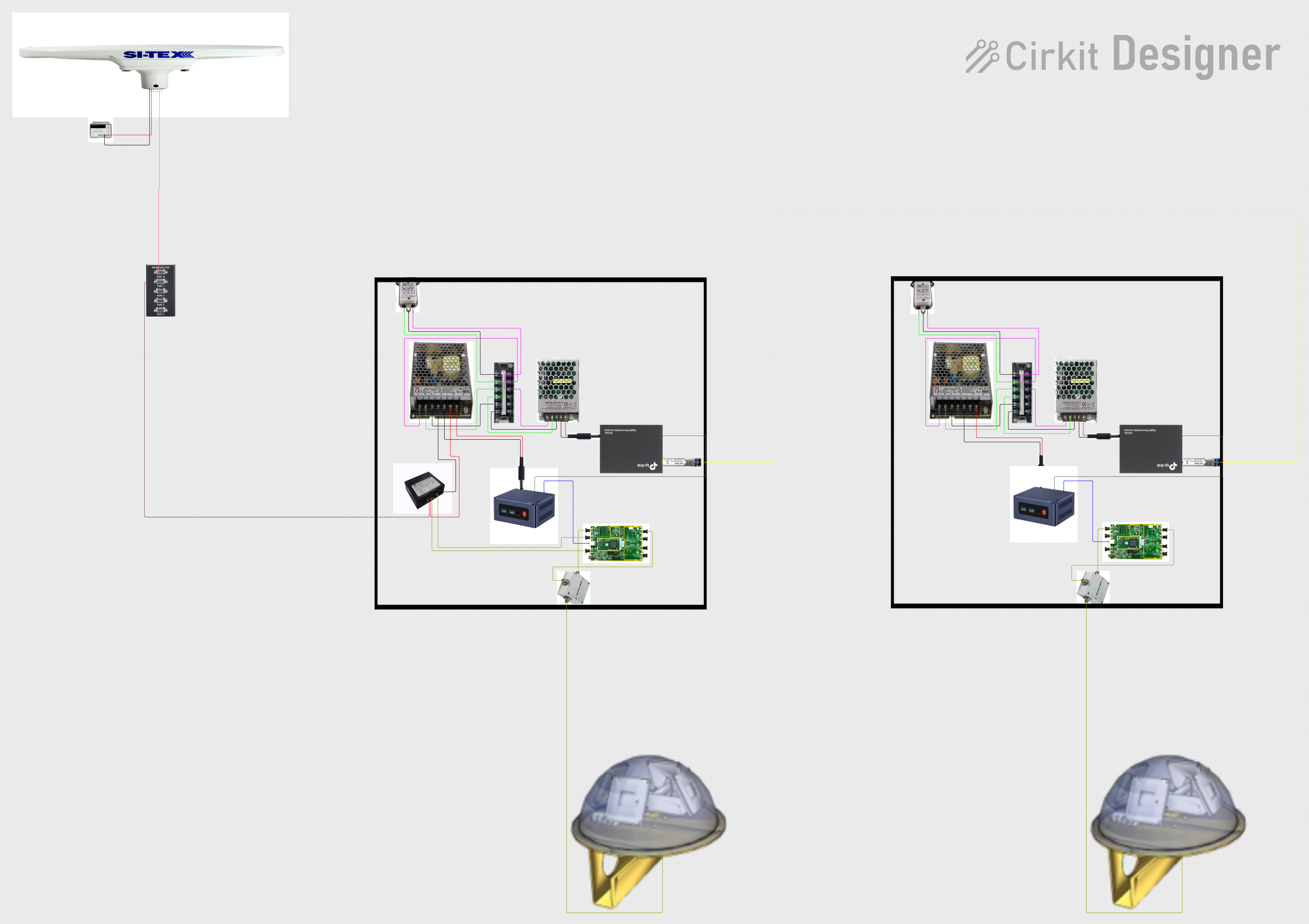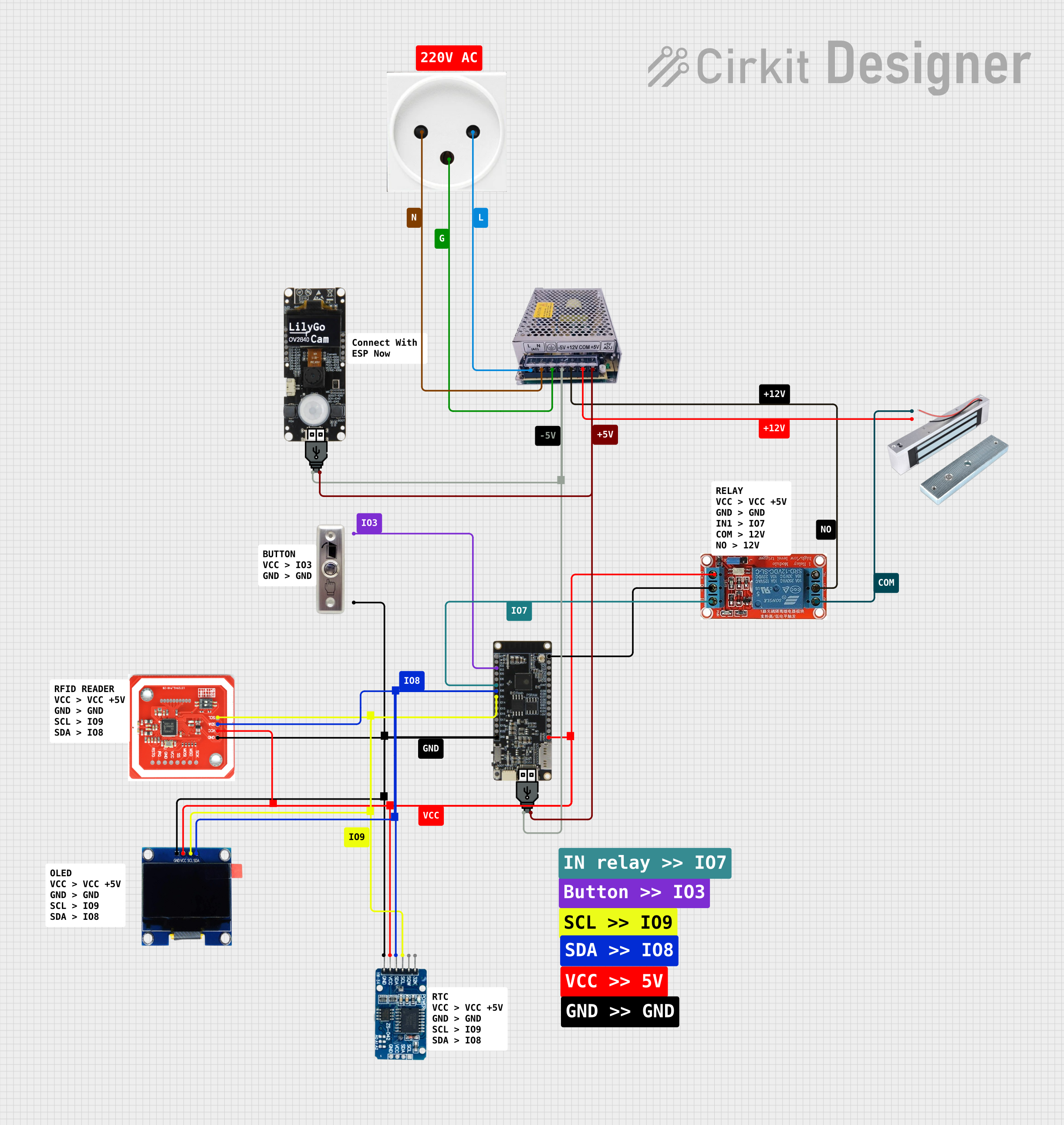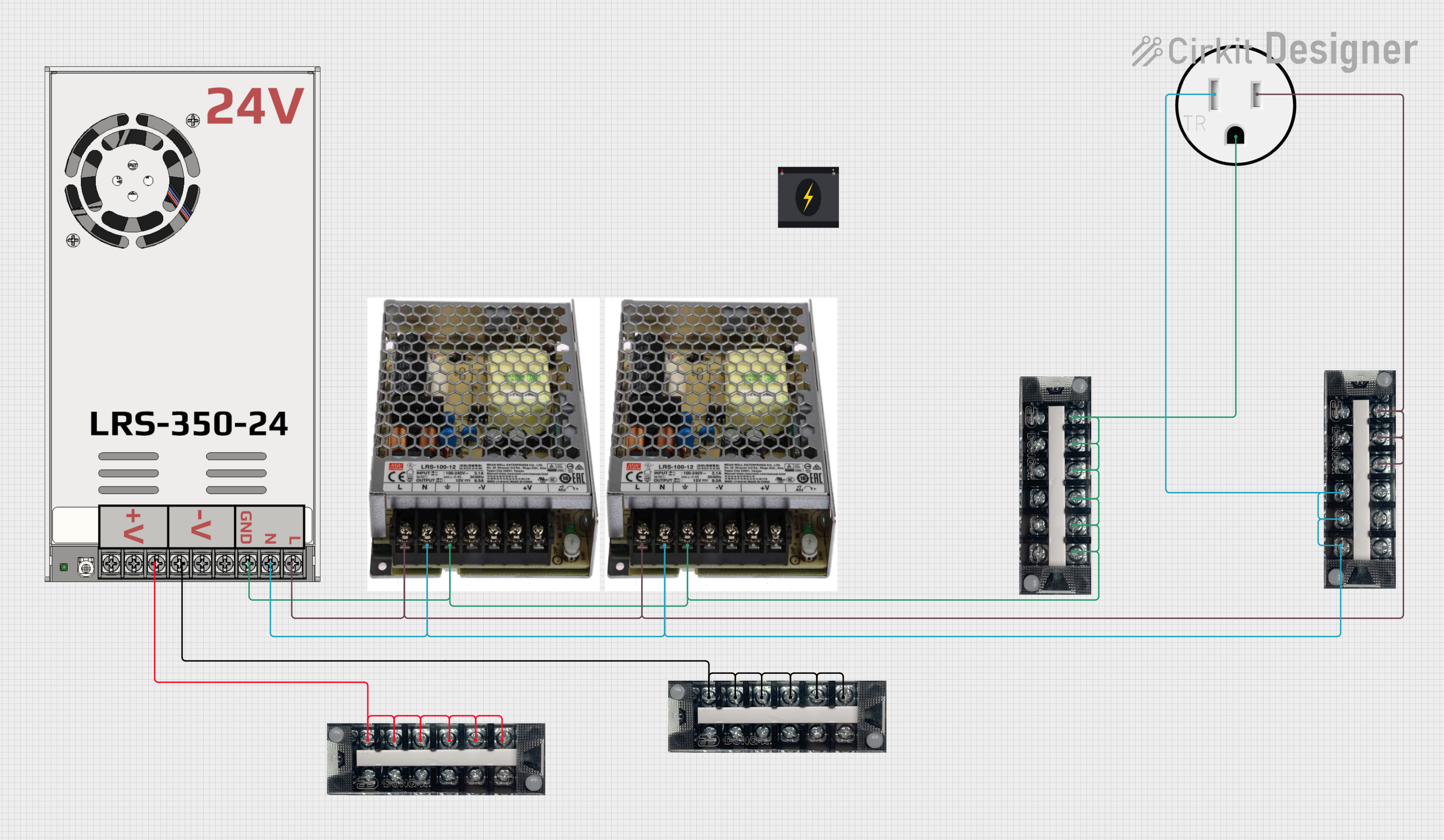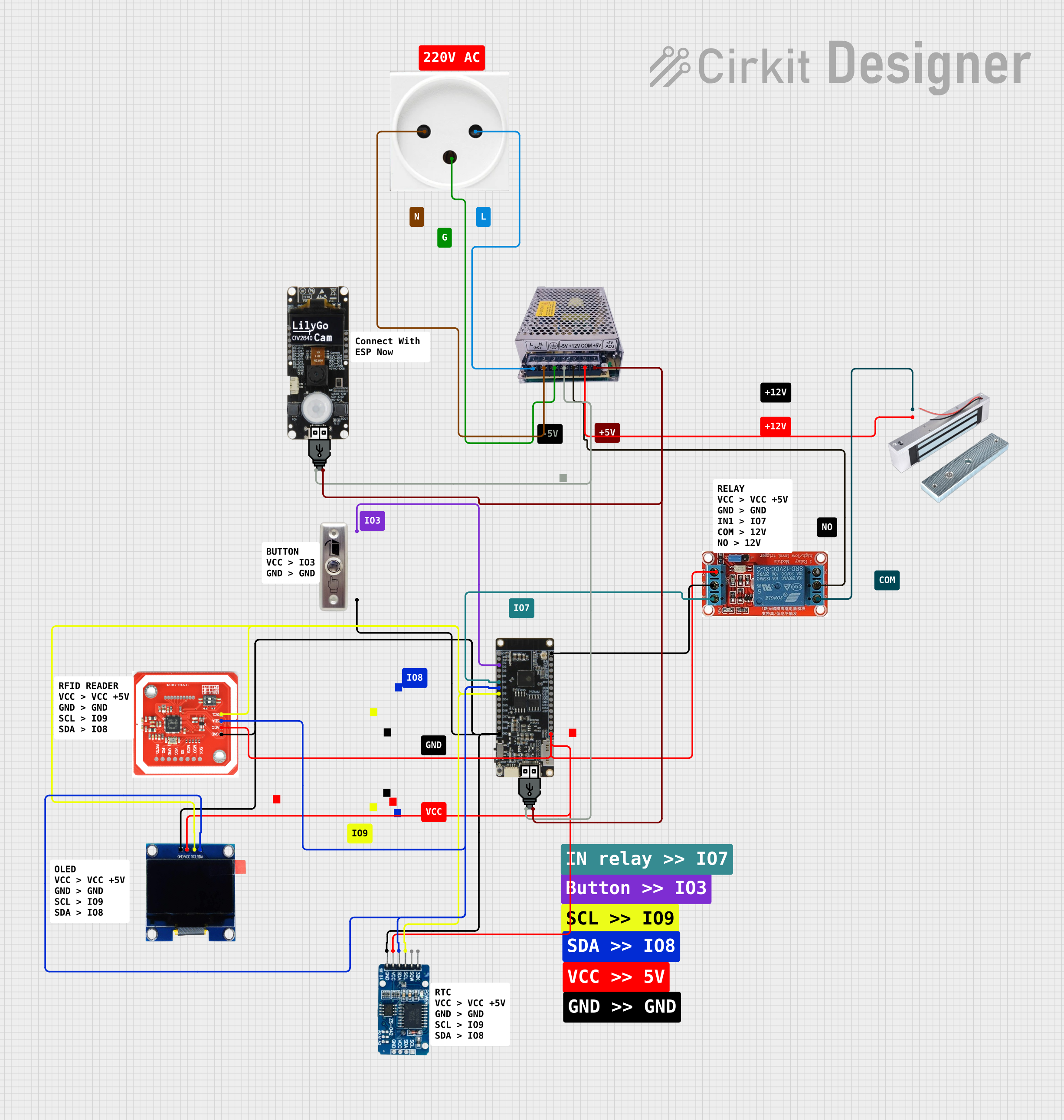
How to Use REF-14S: Examples, Pinouts, and Specs

 Design with REF-14S in Cirkit Designer
Design with REF-14S in Cirkit DesignerIntroduction
The REF-14S, manufactured by RUET Electra Force, is a precision voltage reference component designed to provide a stable and accurate reference voltage in electronic circuits. This component is essential in applications where precise voltage regulation is critical, such as in analog-to-digital converters (ADCs), digital-to-analog converters (DACs), and other precision measurement systems.
Explore Projects Built with REF-14S

 Open Project in Cirkit Designer
Open Project in Cirkit Designer
 Open Project in Cirkit Designer
Open Project in Cirkit Designer
 Open Project in Cirkit Designer
Open Project in Cirkit Designer
 Open Project in Cirkit Designer
Open Project in Cirkit DesignerExplore Projects Built with REF-14S

 Open Project in Cirkit Designer
Open Project in Cirkit Designer
 Open Project in Cirkit Designer
Open Project in Cirkit Designer
 Open Project in Cirkit Designer
Open Project in Cirkit Designer
 Open Project in Cirkit Designer
Open Project in Cirkit DesignerCommon Applications and Use Cases
- Analog-to-Digital Converters (ADCs)
- Digital-to-Analog Converters (DACs)
- Precision Measurement Systems
- Voltage Regulators
- Calibration Equipment
Technical Specifications
Key Technical Details
| Parameter | Value |
|---|---|
| Output Voltage | 2.5V, 5V, 10V |
| Input Voltage Range | 4V to 30V |
| Output Current | 10mA (max) |
| Temperature Coefficient | 10 ppm/°C (typical) |
| Initial Accuracy | ±0.05% |
| Operating Temperature Range | -40°C to +85°C |
| Package Type | TO-92, SOIC-8 |
Pin Configuration and Descriptions
TO-92 Package
| Pin Number | Pin Name | Description |
|---|---|---|
| 1 | VOUT | Output Voltage |
| 2 | GND | Ground |
| 3 | VIN | Input Voltage |
SOIC-8 Package
| Pin Number | Pin Name | Description |
|---|---|---|
| 1 | NC | No Connection |
| 2 | VIN | Input Voltage |
| 3 | GND | Ground |
| 4 | NC | No Connection |
| 5 | NC | No Connection |
| 6 | VOUT | Output Voltage |
| 7 | NC | No Connection |
| 8 | NC | No Connection |
Usage Instructions
How to Use the REF-14S in a Circuit
Power Supply Connection:
- Connect the VIN pin to a stable power supply within the input voltage range (4V to 30V).
- Connect the GND pin to the ground of the power supply.
Output Voltage:
- The VOUT pin provides the stable reference voltage. Connect this pin to the circuit where a precise voltage reference is required.
Bypass Capacitor:
- It is recommended to place a 0.1µF ceramic capacitor close to the VIN pin to filter out any noise from the power supply.
Important Considerations and Best Practices
Thermal Management:
- Ensure proper thermal management, especially if the component is used in high-temperature environments. Adequate heat sinking or airflow may be necessary.
Noise Reduction:
- Use low-noise power supplies and proper grounding techniques to minimize noise and ensure the stability of the reference voltage.
PCB Layout:
- Place the REF-14S close to the load to minimize voltage drops and noise pickup. Use short and wide traces for the VOUT and GND connections.
Example Code for Arduino UNO
The following example demonstrates how to use the REF-14S with an Arduino UNO to provide a stable reference voltage for an ADC.
// Example code to use REF-14S with Arduino UNO
// This code reads the reference voltage and prints it to the Serial Monitor
const int refPin = A0; // Connect VOUT of REF-14S to A0
void setup() {
Serial.begin(9600); // Initialize serial communication at 9600 baud
analogReference(EXTERNAL); // Use external reference voltage
}
void loop() {
int sensorValue = analogRead(refPin); // Read the analog value from A0
float voltage = sensorValue * (5.0 / 1023.0); // Convert the analog value to voltage
Serial.print("Reference Voltage: ");
Serial.print(voltage);
Serial.println(" V");
delay(1000); // Wait for 1 second before the next reading
}
Troubleshooting and FAQs
Common Issues Users Might Face
Inaccurate Output Voltage:
- Solution: Ensure that the input voltage is within the specified range. Check for proper connections and use a low-noise power supply.
Excessive Noise on Output:
- Solution: Add a bypass capacitor (0.1µF) close to the VIN pin. Ensure proper grounding and minimize noise sources in the circuit.
Overheating:
- Solution: Implement proper thermal management techniques such as heat sinking or improved airflow.
FAQs
Q1: Can I use the REF-14S with a 3.3V power supply?
- A1: No, the minimum input voltage for the REF-14S is 4V. Using a 3.3V power supply will not provide a stable output voltage.
Q2: What is the maximum output current of the REF-14S?
- A2: The maximum output current is 10mA. Exceeding this limit may result in inaccurate voltage regulation or damage to the component.
Q3: Can I use the REF-14S in high-temperature environments?
- A3: Yes, the REF-14S operates within a temperature range of -40°C to +85°C. However, ensure proper thermal management to maintain stability.
By following this documentation, users can effectively integrate the REF-14S precision voltage reference into their electronic circuits, ensuring accurate and stable voltage regulation.